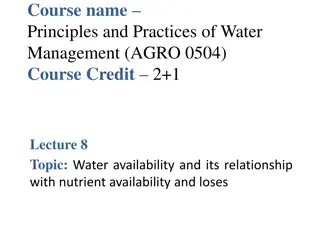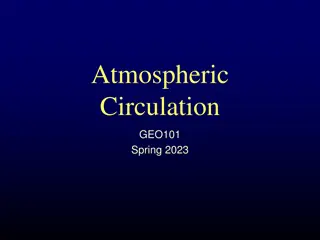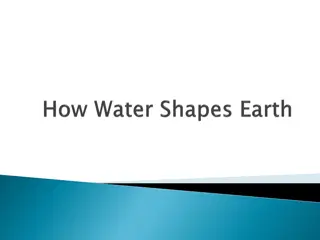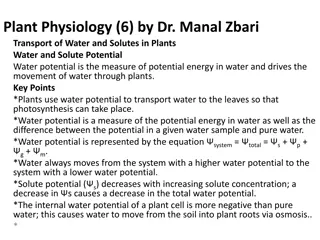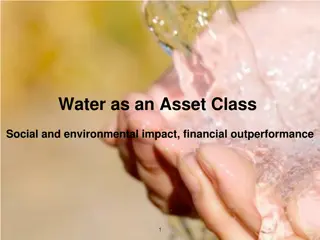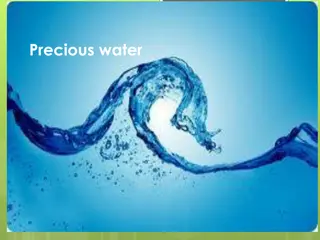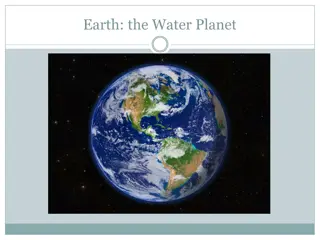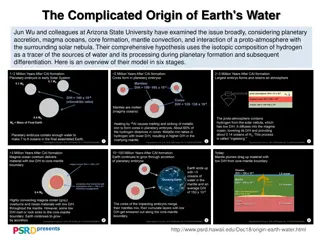The Importance of Studying Water on Earth
Understanding the significance of studying water on Earth is crucial due to the scarcity of freshwater resources, uneven distribution across continents, and the increasing challenges posed by factors like climate change and population growth. Water is essential for human survival, yet only a small percentage of the Earth's total water is suitable for consumption, highlighting the need for sustainable water management strategies to ensure access for all. Various global reports and experts emphasize the pressing issues surrounding water availability and the necessity of conserving this precious resource for future generations.
Download Presentation

Please find below an Image/Link to download the presentation.
The content on the website is provided AS IS for your information and personal use only. It may not be sold, licensed, or shared on other websites without obtaining consent from the author.If you encounter any issues during the download, it is possible that the publisher has removed the file from their server.
You are allowed to download the files provided on this website for personal or commercial use, subject to the condition that they are used lawfully. All files are the property of their respective owners.
The content on the website is provided AS IS for your information and personal use only. It may not be sold, licensed, or shared on other websites without obtaining consent from the author.
E N D
Presentation Transcript
Why study water on Earth? Why study water on Earth? Cnes/Aviso
Introduction: issues Hubert Reeves Canadian astrophysicist At a cosmic scale, water is scarcer than gold Cnes/Aviso
Introduction: issues Water is the oil of the 21st Century Andrew Liveris, Dow Chemical CEO Cnes/Aviso
Introduction: issues There s no subsitute for water Necessary for survival A limited quantity and very few of it available for human use Only 2.5% of the total water is freshwater; Only part of groundwater and surface freshwaters can be used, plus part of the precipitations. Cnes/Aviso Source USGS
Introduction: issues Uneven distribution Asia has 60% of the population but only 36% of the water South America has only 7% of the population but 30% of the water Cnes/Aviso
Introduction: issues Water withdrawal increases Cnes/Aviso
Introdu ction: issues Drought afflicts growing parts of the world Cnes/Aviso
Introduction: issues Cnes/Aviso UNESCO, UN-Water, 2020: United Nations World Water Development Report 2020: Water and Climate Change, Paris, UNESCO.
Introduction: issues Cnes/Aviso UNESCO, UN-Water, 2019: United Nations World Water Development Report 2019: Leaving No One Behind. Paris, UNESCO.
Introduction: issues Total amount of water constant, but: more and more people more and more needs, especially in developing countries uneven distribution Cnes/Aviso
Introduction: issues Cnes/Aviso
Introduction: issues Cnes/Aviso
Introduction: issues Cnes/Aviso
Introduction: issues Cnes/Aviso
Introduction: issues Cnes/Aviso
Introduction: issues in Europe Water resources Water uses Cnes/Aviso
Introduction: issues in Europe Floods Droughts Cnes/Aviso
Issues around the Mediterranean Sea 3% of the Earth's water resources (7% of the human population) 20 million people around the Mediterranean Sea without access to drinking water 47 million without access to water sanitation 11% of the total water used comes from outside the Mediterranean countries. The countries on the South and East coasts have only 10% of the water around the Mediterranean Sea. Irrigation uses 64% of water (45% in northern countries, 81% in eastern and southern countries). Very strong seasonal variations in the demand for drinking water (particularly in relation with tourism) Cnes/Aviso




